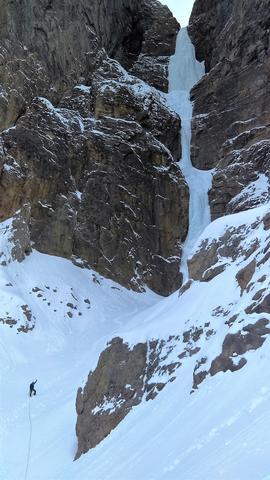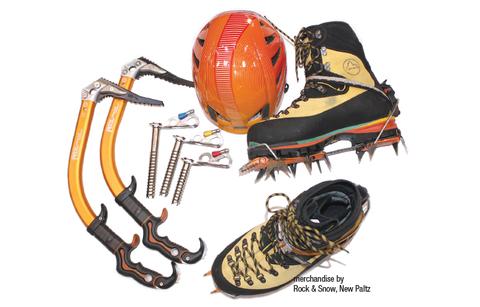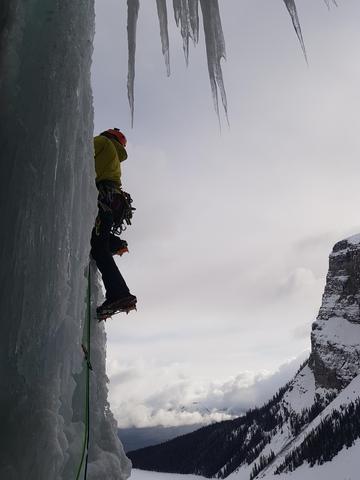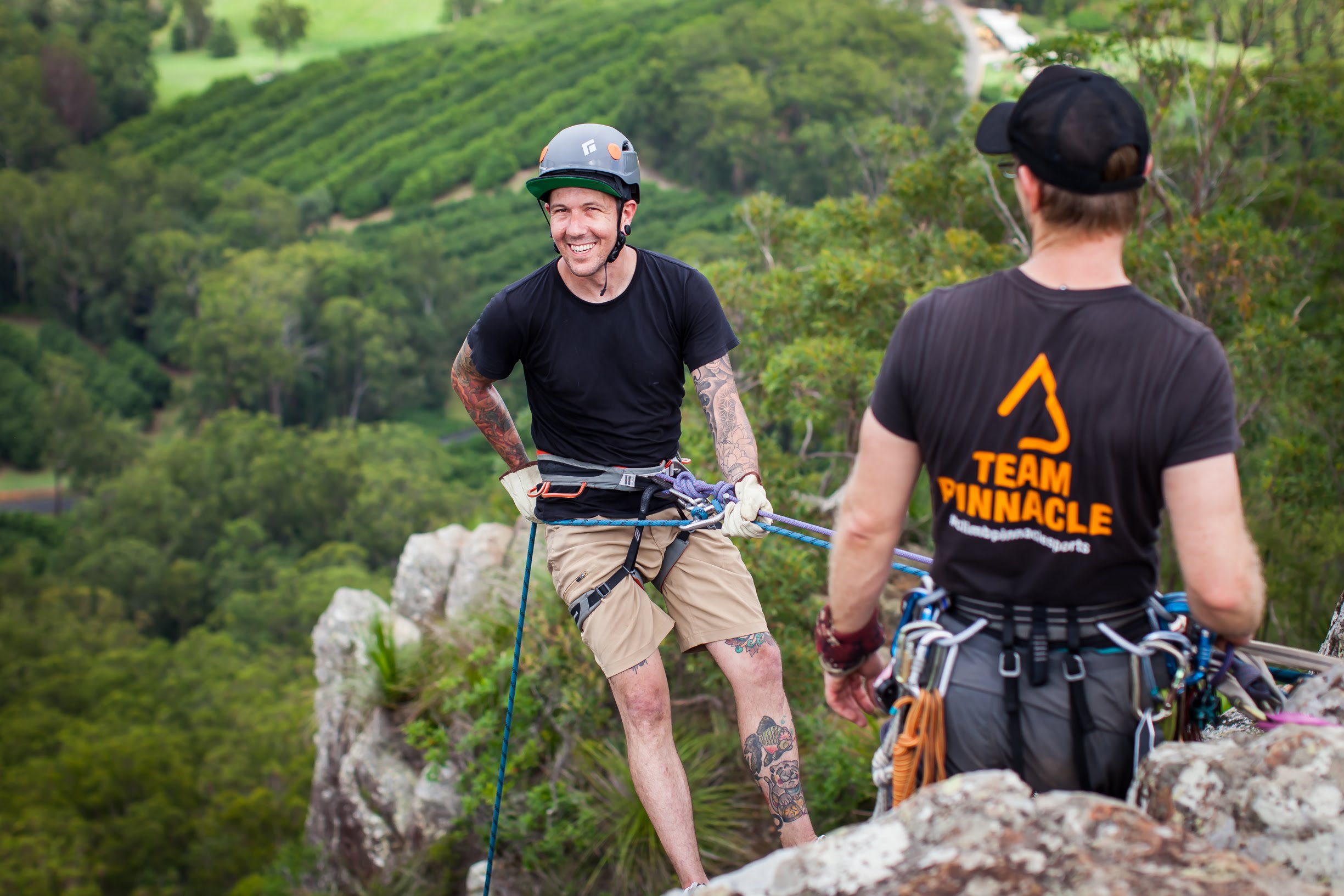Written by Pinnacle Ambassador Josh Worley.
Australian winters are kind of like Clayton’s, the winter you have when you don’t really want a winter. For local rock climbers it is send time on your projects and the perfect opportunity to tick long multi-pitches on sun baked walls. Ice climbing however, is a foreign concept to most Aussie’s and deservedly so. Though you can swing some tools at Blue Lake in Kosciuszko National Park, you really have to travel across the ditch to New Zealand to get properly introduced.
So what is it all about? Whats involved? What is it like and what do the grades mean? Ultimately, is it worth the effort?
The short answer to that last question by the way, is hell yes! If you have dreams of climbing in the greater ranges abroad, ice climbing is a highly valuable asset. It is also a bucket load of fun!
Ice climbing is exactly what is sounds like. Climbing frozen water. In places where they have a proper winter, like the Canadian Rockies for example; water funnelled into various geological features freezes to form thick, beautiful blue curtains of ice. It is not just waterfalls that freeze over either, water seeping out of the rock and snow melt are other ways in which ice climbs form. The resulting features are some of the most majestic and picturesque to be found.

A climber stands below the top half of the ultra classic ice climb, Polar Circus. (Source: Josh Worley)
It’s too cold to climb using your hands and feet so instead you use tools to ascend the ice. Tools with reverse curved picks are swung into the ice while crampons with either dual or single front points are attached to your feet to give you purchase. The rhythmic swinging of your tools and crampons combine to provide a sense of movement with incredible flow. Once mastered, this rhythm is one of the greatest pleasures in ice climbing.
Obviously there are no bolts in the ice. So what do you use for protection? Hollow tubes of steel which you screw into the ice. Screws have a hanger permanently attached to facilitate the attachment of quickdraw or slings. It’s not like clipping bolts though. The effort to place a screw is significantly greater, often taking thirty seconds or more. So managing the balance between placing enough screws to be safe and not getting too pumped to climb is crucial!
The sport does have it’s drawbacks. When it is extremely cold out, or the climb is ‘wet’ due to melting ice there is a fair risk that you will succumb to the much feared screaming barfies. This is where either your hands or feet get so cold that no blood is pumped to them. The blood vessels close off in an attempt to keep you warm. Eventually as the blood starts to return to those parts of the body, you are overcome by a severe pain, the like of which is hard to explain to someone who has not experienced it first-hand. It hurts so much you feel faint, want to scream in pain and throw up all at the same time. Hence the name, screaming barfies.
The other major drawback is the high consequence of a fall. Any fall in ice climbing carries a high risk of incurring a broken bone, particularly legs and ankle. The crampons you use to ascend the ice can easily catch when falling, holding your foot firmly in place as the rest of your body continues to plummet towards earth. Not good.

The basic equipment needed for ice climbing. (Source: activecities.com)
So what about the grades? Ice climbing grades range from WI1 – WI7 (WI standing for Water Ice). There is debate over a WI8 grade however to my knowledge there is no consensus yet. Essentially the grading system is based on a few factors; the angle of the ice, the height of the feature, how good and abundant proection is as well as how sustained the climbing is. Below is a simple table providing the broad outlines for the grades (sourced from Alpinist.com).
Ice Climbing Grades:
WI1 - Low angle ice; no tools required.
WI2 - Consistent ice of 60º, possible bulges. Good protection.
WI3 - Sustained 70º ice with possible long bulges of 80º—90º; reasonable rests and good stances for placing screws.
WI4 - Continuous 80º ice, fairly long sections of 90º ice, broken up by occasional rests.
WI5 - Long and strenuous, with a ropelength of 85º-90º ice offering few good rests; or a shorter pitch of thin or bad ice with protection that’s difficult to place.
WI6 - A full ropelength of near 90º ice with no rests, or a shorter pitch of even more tenuous than WI5 ice. Highly technical.
WI7 - As above, but on thin poorly bonded ice or long, overhanging poorly adhered columns. Protection is impossible or very difficult to place and of dubious quality.
Source: alpinist.com
You can’t really translate rock climbing grades to ice so don’t bother. It is impossible to say that a person crushing >25 on rock could lead a WI3 climb. They are obviously good athletes and could probably climb it on top rope first go, but that is about where the comparison ends. It is just a different kettle of fish.
Does all the above sound awesome? Of course it does! So how do you get started. Well if you want to fit yourself out with your own equipment you better start saving. A basic set of tools, crampons, appropriate boots and screws will likely cost you over $2,200. Then you want appropriate clothing. A couple pairs of gloves, layers to stay warm and a hard shell could see you spending easily another $800 or so. The good news is you can use the same rope and draws that you do rock climbing!
Before you start throwing money around like nobody’s business though you might want to actually give it a go. My recommendation would be to head across the ditch to that amazing place known as New Zealand and do a specific ice climbing course. There are several companies that offer these. Shop around and see what best suits your needs.
Before you do that however, you should have competent rope skills and safety systems. Apart from a few ice specific techniques that those courses will teach you, the systems and skills used in ice climbing are the same as for rock climbing. Knowledge of knots, building anchors, rappelling, multi-pitch skills such as top belaying and vertical rescue are all immediately transferable. The best place to build the foundation for these skills can be found right here in Brisbane with the folks at Pinnacle Sports. Whether you are brand new to the outdoors and want to learn the basics in the Top Rope Course or learn the more advanced techniques in the Vertical Rescue Course. The team at Pinnacle Sports have the knowledge and passion to get you to where you want to be.

The author leads out on the crux pitch of Louise Falls in Canada. (source: Josh Worley)
About the author:
Josh Worley is a Brisbane climber and adventurer currently undertaking the Vertical Year project. During 2018 he will climb classic routes in the Canadian Rockies, Peruvian Andes, California and New Zealand while aiming to raise funds and awareness around the impacts of climate change and youth mental health. Josh has been ice climbing in Canada since the end of January. To learn more about his project visit www.verticalyear.com
Looking for more great reads? Subscribe to our newsletter to stay up to date with the latest climbing tech, crag recommendations and upcoming events.









